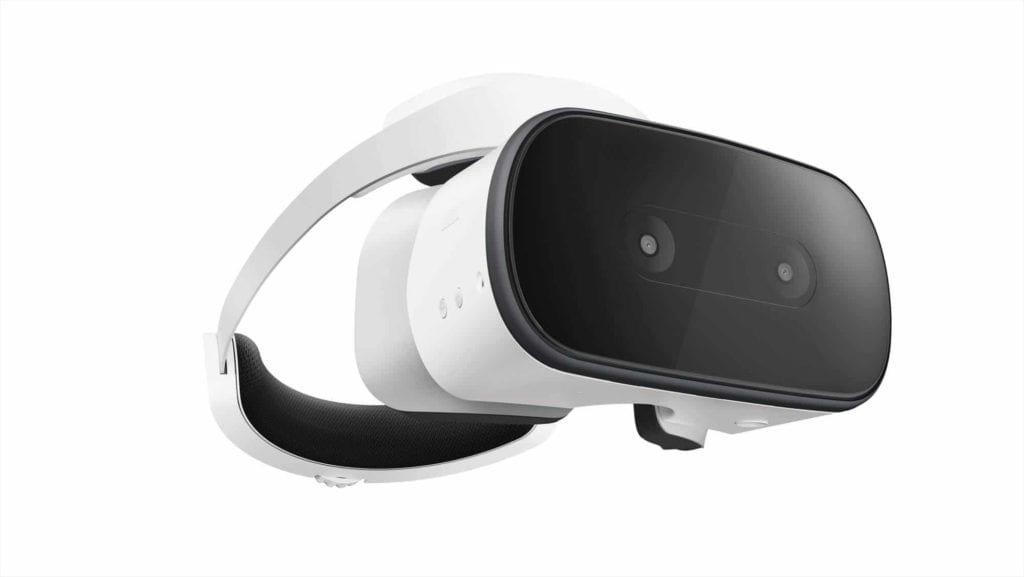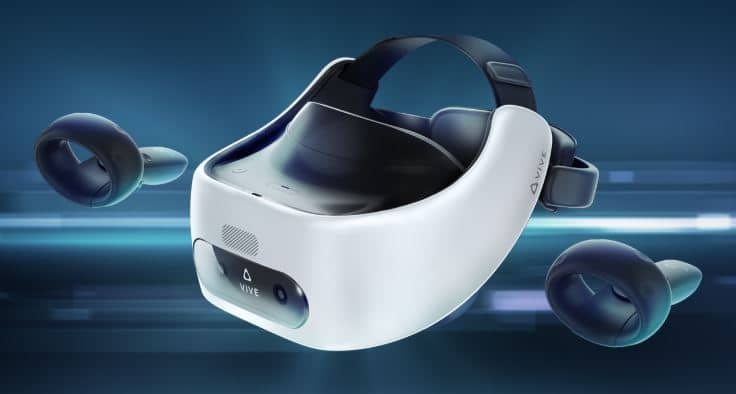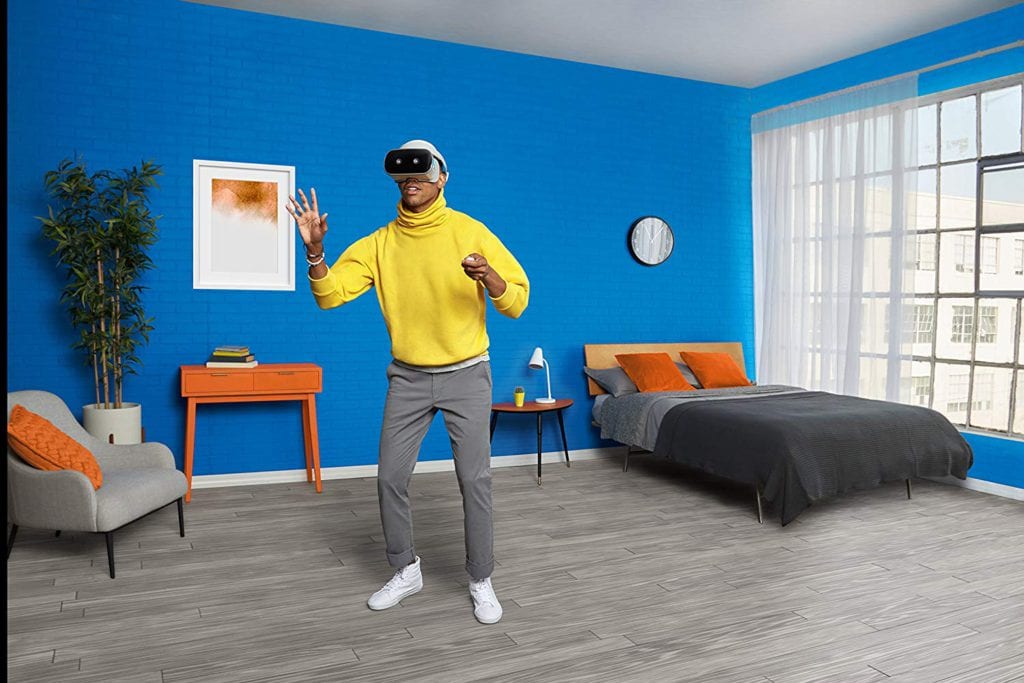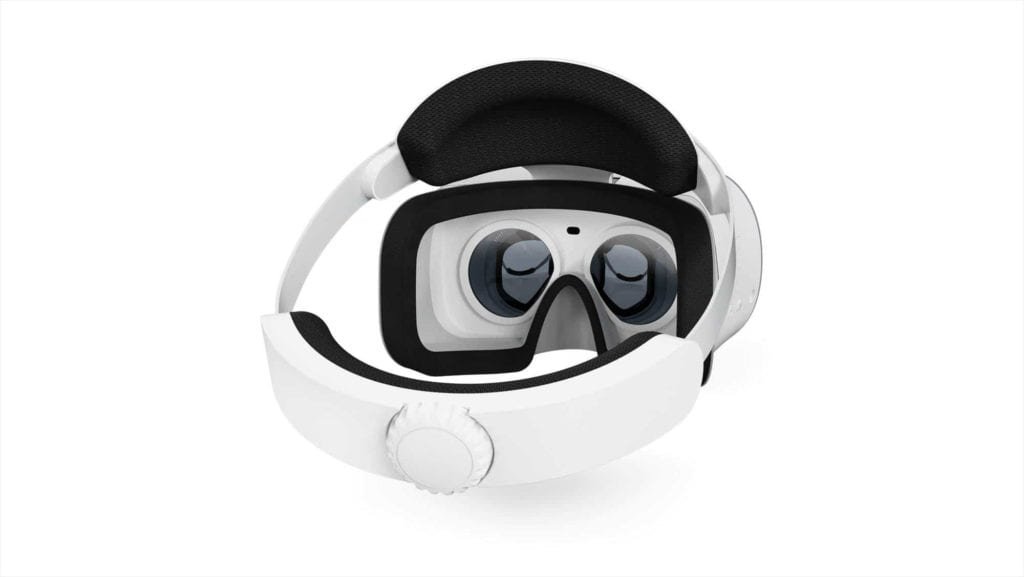The battle between the VR headsets is heating up. With more and more companies, coming out with their own VR headsets it is becoming difficult to pick the right one.
The best way is to shortlist the options and compare them. However, It is essential to understand the parameters you should compare them on. Once you are clear about these parameters, picking the right one becomes an easy task.
Today, we will be comparing two such headsets. We will pit Lenovo Mirage Solo vs HTC Vive Focus Plus. We will compare them on different aspects to you understand which one is a better option.
Table of Contents
Display and Resolution
The Lenovo Mirage Solo comes along with its 5.5 inch LCD panel. When you compare it with HTC vive, you will realize that the display resolution is much better.
The display resolution offered by Lenovo Mirage Solo is 2560 x 1440 pixels. As a result, the clarity is on the higher side. However, the display quality could have been better.
There are a few pixels visible, which is why the sharpness is not up to the mark. This problem, however, is quite limited.

It offers immersive sharpness, which ensures that you can play games smoothly. If you’re not picky, you will not even notice it.
One thing which this VR headset has got right is the screen door effect. The black space between the pixels is pretty minimal. Also, there is no motion blur, which means that you can play the fastest games without any glitch.
Motion blur can lead to motion sickness, and that is why this VR headset is a great improvement. The sharpness, however, is a bit lower.
While the Lenovo Mirage Solo might have its ups and downs but generally speaking, since it minimizes a lot of display errors, it is actually a good VR headset to consider.

The Vive Focus Plus comes with an OLED display. The resolution of the screen is 2880 x 1600. The refresh rate is 75 Hz. As a result, you will not have to worry about motion blur at all.
With the help of Fresnel lenses, the sharpness is on the higher side, and the screen door effect is on the lower side. It means that the clarity which you will get is on the higher side. The AMOLED screen, however, is of 3.5” diagonally.
In terms of the display quality, the Lenovo Mirage certainly takes the cake.
Tracking and Controllers
Mirage Solo consists of the 3 DOF controllers. It comes along with the other Daydream devices also. The controller includes a touchpad. It consists of an LED to denote the status.
Also, two buttons are present on the controller. The index finger trigger, however, is missing. The controller, however, includes two buttons on the side to vary the volume.
It is USB chargeable which means that charging it is a cinch. The rechargeable controller also means that you will not have to worry about changing the batteries again and again.
In terms of ergonomics, it is not only lightweight but quite elegant and slim. You can fit it in one hand quite easily.
However, the shape is not as good as that of Oculus Go controller. The only thing that is missing is the index finger trigger.
HTC Vive Focus Plus comes with 6 DOF controllers. The advantage of these controllers is that the experience is much more immersive.

Also, these controllers are an advantage for the developers as well. They help the developers in migrating from the PC-based VR games to the ones which are compatible with this VR headset.
The 6 DoF controllers mean that it is compatible with a variety of different VR content options.
These include gaming consoles, PCs, laptops, cloud services. Due to this type of controls, the amount of content available for this headset is much higher.
The controllers are ultrasonic, which means that they can track your movement without any external sensors. It increases the accuracy of the controllers significantly.
Moreover, you will not have to worry about connecting any wires to the controllers. Additionally, you will not need any accessories either.
It means that it can provide you with a truly hands-free experience. That is why the controllers of this headset are much better.
In the controller department, the HTC Vive Focus Plus certainly outscores the Mirage solo due to its 6 DoF controllers.
Battery Life of the Headset
The batter inside the Mirage Solo is 4000 mAh. It can last for up to 2.5 hours.
The battery life of HTC Vive Focus Plus is 3 hours. The charging time for this headset is just two hours. As a result, you will not have to wait for a long time for recharging.
In the battery department, the HTC Vive focus plus certainly is a good option.
Games on the two headsets
Lenovo Mirage Solo is the first headset to use WorldSense by Google. WorldSense currently has 60 types of games. Some of these are Daydream games. An example is Extreme Downhill.
The game makes use of the positional sensing feature of the headset to help you duck down when you come across barriers.
This additional feature of Lenovo Mirage Solo along with 60 games provides it with plenty of content. Some of the popular games on the headset are: Need for speed, Hungry shark VR, The racer.
With 60 games and apps on offer, there is certainly no shortage of content when it comes to the Lenovo Mirage Solo.
The HTC Vive Focus Plus has a centralized content platform. You can easily create groups to curate the content as per your requirement.
You can configure the device at multiple locations as per your convenience. HTC is building a Viveport ecosystem which will provide vast content.
Out of these 20+ are currently available for the HTC Vive Focus Plus. The centralized platform might seem exceptional, but it is still under development.
Due to this very reason, the number of games available is limited. Also, the HTC Vive Focus Plus is more geared towards business use.
Therefore, in terms of games, Lenovo Mirage Solo has an edge even after the announcement of a centralized content platform.
Comfort
Lastly, it is necessary to look at the comfort provided by the headset. Only when it is comfortable and easy to wear, you can wear it for 2 to 3 hours.
We will compare both these headsets on this parameter as well to help you understand which one is comfortable with consistent use.
The Lenovo Mirage Solo weighs just 645 gms. It uses visor-based mechanism. The advantage of this mechanism means that it will not put pressure on any point of your face.

With the help of the knob, you can quickly tighten or loosen the headset, which means that customizing the fit is quite easy. With the help of a button below the headset, you can change the distance between your face and headset.
While it might provide you with immense comfort, but there is also a disadvantage of the visor mechanism. It is not removable.
That is why, when you’re looking to carry it around with you on the trips, it can be a bit bulky. Apart from that, the visor mechanism certainly works to your advantage.
The HTC Vive Focus Plus weighs 695 gms. It means that the headset is quite lightweight. Additionally, the ergonomic design means that you can wear it comfortably.
It is suitable for even those people who have glasses. The procedure to wear this headset is simple. You have to put the headset over your eyes and the strap around the back of your head.
You can adjust the back strap as per your requirement. It ensures that you will get a comfortable fit.
You have to ensure that the cables pass through the sleeve which is at the back of the headset. It will ensure that it does not create any discomfort.
There is an IPD knob on the headset which allows you to vary the distance between the lenses. Hence, you can easily change it according to the gap between the lenses of your eyes.
It means that you will be able to focus on the lenses when wearing this headset. There is also an additional knob which allows you to adjust the distance between lenses and the face.
That is a separate knob for each lens, which means that you can customize each lens selectively. That is why; customizing the HTC Vive Focus Plus headset according to your face size will never be a problem.
As you can see, in terms of comfort, both these headsets are pretty good. Both of them are ergonomic and provide you with comfortable and easy adjusting mechanisms.
However, since Lenovo Mirage Solo is a bit lighter than the HTC Vive Focus plus, it is a winner in this department.
Conclusion
So, if you are confused about Lenovo Mirage Solo vs HTC Vive Focus Plus, it is essential to judge them on these parameters. Both these handsets provide you with the immersive VR experience.
That is why; it can be tough at times to choose the right one. While they are comfortable and lightweight and come along with their screens, but there is a single factor which can help you choose between these two.
If you’re looking for a gaming headset, you can go with the Lenovo Mirage Solo. If you’re looking for one which can be suitable for business applications as well, you can go with the HTC Vive Focus Plus.
Do check out both the headsets and let us know what you think in the comments below!
If you like the post then do not forget to share it on social media!
Leave a Reply